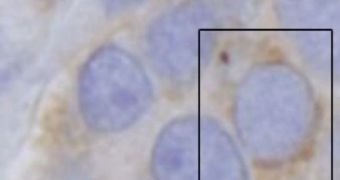In a study that could lead to the development of new therapies and prognostics for breast cancer, researchers in the United States were recently able to study a series of molecular interactions occurring in breast cancer cells.
They discovered how the protein survivin is able to escape the nucleus of such a cancer cell, and then act from the outside to promote its survival. By addressing this mechanism, it may be possible to at least hamper the growth of tumors, and maybe even force them into remission.
Investigators from the Brown University and Hasbro Children’s Hospital say that survivin works in tandem with three other molecules, called HDAC6, CBP, and CRM1. Details of the study will appear in the March 30 issue of the esteemed Journal of Biological Chemistry.
These molecules work together with other proteins in order to exit the nucleus. This is a critical moment for breast cancer cells, so interfering with specially designed drugs at this precise time could help destroy tumors.
Scientists with the joint team explain that the place a protein is located inside the cell has a significant impact on a large number of diseases, not just cancer. With this in mind, they add, a series of new research options have now been made available.
Even though scientists have been suspecting that these four proteins played a role in breast cancer, studies conducted on this issue thus far have produced inconclusive results, says the senior author of the new paper, Dr. Rachel Altura.
She holds an appointment as an associate professor of pediatrics in the BU Warren Alpert Medical School, and is also a pediatric oncologist at Hasbro Children’s Hospital. “We need to look not only at the levels, but also where is it in the cell,” Altura says of survivin.
“You always have to worry about all the things you don’t know that you are targeting. If we can target HDAC6, we can maybe block survivin from coming out of the nucleus and maintain it in its good state,” the expert adds.
She and collaborators at a number of universities and pharmaceutical groups have already begun work on two different approaches to achieve this objective. If successful, the research may set the foundation for two new classes of treatment against breast cancer.
Funding for this investigation came from the Center for Research Resources at the US National Institutes of Health (NIH).

 14 DAY TRIAL //
14 DAY TRIAL //